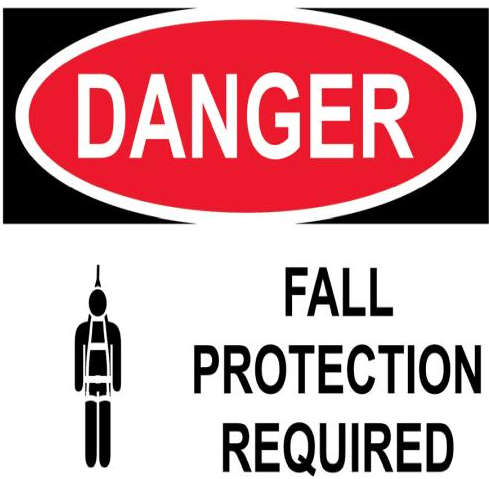Personal Fall Arrest Systems are one way to protect workers on construction sites where there
are vertical drops of 6 or more feet. Systems must be set up so that a worker cannot fall more
than 6 feet, nor come into contact with any lower level.
You should be able to answer Yes to each of the following.
1. Is your Personal Fall Arrest System made up of an anchorage, connecting device, and a full body harness?
2. Are the components from the same manufacturer to ensure that the system works as it should?
If not, has any substitution or change to a personal fall arrest system been fully evaluated or
tested by a competent person to determine that it meets the standard?
3. Has your personal fall arrest system been inspected for damage each time before you wear it?
[If there are defects, or if someone has taken a fall using the equipment, it must be removed from
service.]
4. Is the attachment location of the body harness in the center of your back, near the shoulder
level or above your head?
5. Do vertical lifelines or lanyards have a minimum breaking strength of 5,000 lbs? Are they
protected against being cut or abraded?
6. Will each worker be attached to a separate vertical lifeline?
7. Is the webbing, [the materials used for ropes and straps of lifelines, lanyard and harnesses]
made of synthetic fibers?
8. Is the anchorage for workers’ personal fall arrest equipment independent of any anchorage
used to support or suspend platforms? Is it able to support at least 5,000 lbs. per worker attached
to it?
9. Are the connectors made from steel or equivalent materials, with a corrosion-resistant finish
and smooth edges?
10. Do the D-rings and snaphooks have a minimum tensile strength of 5,000 lbs.?
11. Are snaphooks of a locking-type and designed to prevent the snaphook from opening and
slipping off the connector?
12. Are the snaphooks not directly connected to the webbing, rope or wire, to each other, to a Dring to which another snaphook or other connector is attached, to a horizontal lifeline, or to any
other object that could cause the snaphook to open?

